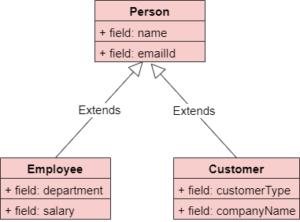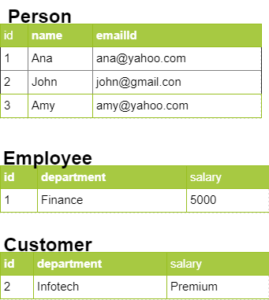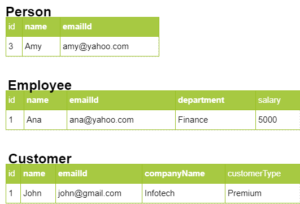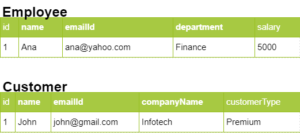JPA/Hibernate Inheritance Mapping Strategies Explained
Java is inherently an object-oriented language. Databases are relational in nature. JPA/Hibernate support Inheritance strategies. These allow mapping Java class hierarchies to database tables. In this article, I will be covering inheritance strategies supported by JPA/Hibernate.
Table Of Contents
Introduction
JPA/Hibernate support 4 inheritance strategies, Single Table, Joined, Table Per Sub-class and MappedSuperClass. In this article, I will be covering each inheritance strategy and how it works.
Sample Code
Consider the following class diagram:

Here Person is a super class. It has two sub-classes, Employee and Customer. Let us see how each of these strategies work for the above class hierarchy.
Single Table
This strategy is also known as table per hierarchy. In this strategy, JPA creates a single table corresponding to all the classes in the inheritance hierarchy. This table has columns corresponding to the fields in all the classes in the hierarchy. So in this example, the table will have columns corresponding to the fields in Person, Employee and Customer classes.
Each record uses only a subset of the columns corresponding to the underlying entity that it represents and sets a null value for the other columns. So an Employee record will only use the columns name, emailId, department, salary. It will have null values for customerType and companyName fields.
In addition, JPA adds an additional column to the table. This is known as the discriminator column. This differentiates between the records.
So for the class structure above, JPA creates the following table:
Joined
In this strategy, JPA creates separate tables corresponding to each class in the inheritance hierarchy. The table corresponding to the base class has columns corresponding to the fields in the base class. So here, the Person table will have fields corresponding to name and emailId.
The tables corresponding to the sub classes has columns corresponding to the fields in the sub classes. So here the Employee table has fields corresponding to the department and salary. The Customer table will have fields corresponding to companyName and customerType,
For a base class record, JPA stores all the data in the base class table. For a sub-class record, JPA stores the common fields in the base class table and the individual fields in the sub-class tables.
So for the class structure above, JPA creates the following table structure:
Table Per Sub-Class
In this strategy, JPA creates separate tables corresponding to each class in the inheritance hierarchy.
The table corresponding to the base class has columns corresponding to the fields in the base class. So here, the Person table will have fields corresponding to name and emailId.
The tables corresponding to the sub classes have columns corresponding to the fields base class well as fields in the sub classes. So here the Employee table has fields corresponding to name, emailId, department and salary. The Customer table will have fields corresponding to name, emailId, companyName and customerType,
For any entity, JPA stores data in the corresponding table.
So for the class structure above, JPA creates the following table structure:
MappedSuperClass
In this strategy, JPA creates separate tables corresponding to each sub-class in the inheritance hierarchy. The sub class tables have columns corresponding to the fields base class well as fields in the sub classes.
This is similar to table per sub-class except that superclass is not an entity and there is no table corresponding to the superclass. So in this case, JPA does not create a table corresponding to the Person class, it only creates tables corresponding to Employee and Customer.
The Employee table has fields corresponding to name, emailId, department and salary. The Customer table will have fields corresponding to name, emailId, companyName and customerType.
So for the class structure above, JPA creates the following table structure:
I will be demonstrating how to implement each of these strategies in subsequent articles.
Further Learning
Master JPA and Hibernate with Spring Boot
Spring Data JPA with Hibernate
Hibernate and JPA Fundamentals
Conclusion
So in this article, we saw the JPA/Hibernate inheritance mapping strategies. We understood the Single Table, Joined, Table per class and MappedSuperClass hierarchies and the table structures that they create.




